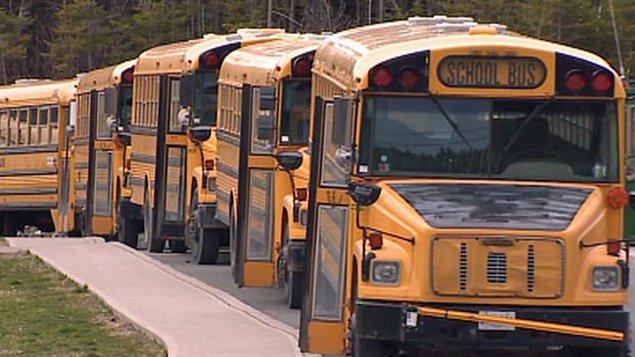As the new school year gets fully underway this week across Canada, there are concerns about children’s health and fitness level.
In the south-western region of the central province of Ontario, the Windsor-Essex County Health Unit says it wants to see more kids walking to school.

A report earlier this year showed 62 percent of Canadian children ride to school on busses or cars and only 24 percent say they walk or bicycle to school regularly.
The report shows an almost complete reversal from just a generation before as some 58 percent of parents said they had walked to school as children.
The Health Unit says walking to school would be an excellent exercise which helps build and maintain bones, muscles, and joints, helps control weight and increase energy.
The organization Active Healthy Kids Canada estimates a child would take an average of 2,238 additional steps each day if he or she walked for all trips of less than one kilometre, not just school routes.
The Greater Essex District Public School Board has just over 35-thousand students registered, and almost half of them (16,273) have spots designated to them aboard school busses.
Board spokesperson Scott Scantlebury said in an email, that it’s difficult to know how many of the remaining 19,000 or so, walk or ride to school in cars. He adds however, that overcrowding in parking lots is a problem as is traffic control in the mornings and afternoons as so many children in cars are dropped off or picked-up.
Several hours further east, in the Greater Toronto and Hamilton area, a 2009 study by Metrolinx (regional transportation authority) showed that 34 percent of children are driven to school. Of that number more than half (60%) live within two kilometres of their school. That study also found that 60 percent of parents felt their children live close enough that they could reasonably walk or cycle to school.
Environmental groups say with fewer busses, and fewer kilometres driven by cars, including the time spent with idling engines when dropping off or picking up children, there would be reduced greenhouse gas emissions.
in addition to the important health benefits for children, other benefits of having them walk or bike to school include reduced costs and saved time because parents, schools, school boards and municipalities can all realize savings in time as well as operating and capital costs when motorized school travel is reduced.
Carolie Walters with the Health Unit says, “..with our obesity challenge and inactivity crisis, it’s a great opportunity for kids to be physically active”.







For reasons beyond our control, and for an undetermined period of time, our comment section is now closed. However, our social networks remain open to your contributions.